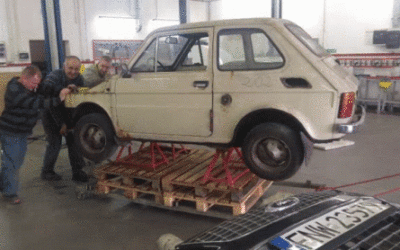Fleet vehicle running costs up 12% year-on-year

The price per mile of running a fleet vehicle has risen by 12% year-on-year.
Recent data from a fleet industry index revealed that the year-on-year cost per mile of running vans, haulage, and courier vehicles has risen yet again.
The combination of the global semiconductor crisis, rising fuel prices, Brexit, driver shortages, and the pandemic have seen costs rise yet again.
Data is released each month on the costs of running fleets, and this is now the 14th consecutive month where prices have risen.
What’s Driving The Rising Cost Of Running Vehicles?
The issues with driver shortages were well publicised and reached a peak in August/September 2021.
There were some issues during the Christmas period as well, most notably affecting the food supply chain and resulting in some shop shelves being empty for a prolonged period.
That resulted in rising costs to get drivers in, and as a result, the overall cost for fleets rose.
But it’s been one issue after another and just as we began to get a grip on the driver shortage issue, fuel prices were suddenly the next big problem.
High fuel prices have put a significant strain on the automotive sector in recent months, with the oil prices almost tripling in the last year.
All of this led the government to take action by announcing a 5p per litre cut in fuel duty in an attempt to address the rising costs.
There are other factors at play, though, with the introduction of further low emission zones in areas such as Birmingham and Bath also adding to the cost for some drivers.
The expansion of London’s Ultra Low Emission Zone (ULEZ) means that fleets are having to factor in the additional costs to their driving expenditure.
What is the knock-on effect?
A myriad of issues has compounded to increase pressure on fleets, with rising prices squeezing margins and driving the cost of operations up to unprecedented levels.
And as the issue spreads through the supply chain, the reality is that the margins will be finer at every step and will most likely result in higher costs across the board.
Even if prices do drop, and we’re starting to see crude oil prices drop now, it’s unlikely that they’ll return to the level they were at 12 months ago, and the costs we’re now seeing will most likely be here to stay.
The pressure on many businesses means that they’re going to have to find the money from somewhere – whether that’s a price rise, a change in services, or even a delay in their vehicle replacement cycle.
There’s already a long lead time for new commercial vehicles which has resulted in many fleet owners sticking with their current vehicles way beyond the length of time they ordinarily would.
According to reports, that’s also causing problems with vehicles experiencing mechanical faults due to extreme wear and tear, adding to the costs for fleets.
Have you noticed an increase in costs for running vehicles in your fleet? How are you dealing with the challenges? Let us know in the comments below.










